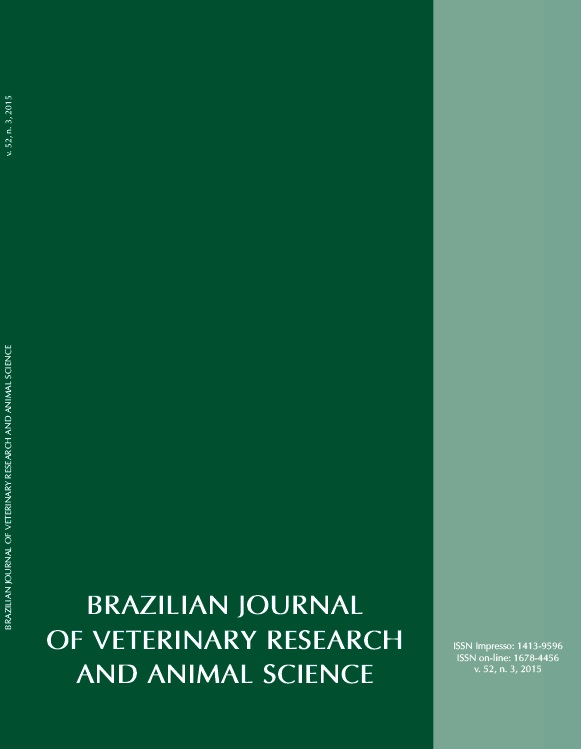Hematological adaptation in Holstein calves during the neonatal period
DOI:
https://doi.org/10.11606/issn.1678-4456.v52i3p212-216Keywords:
Cattle, Newborns, Blood count, Neutrophil-lymphocyte ratioAbstract
The aim of this study was to evaluate the hematological profile of Holstein calves during the first month of life. Blood samples were harvested (n = 208) from 26 calves, from birth until 30 days of life. Hematologic values were determined by an automatic system associated with differential leukocyte count by manual methods. Variations in the erythrogram components were detected from birth up to the 30th day of life, except for hemoglobin (Hb) concentration and Mean Corpuscular Hemoglobin Concentration (MCHC). At birth, higher values were observed for hematocrit, Mean Corpuscular Volume (MCV) and Mean Corpuscular Hemoglobin (MCH) that decreased in subsequent moments. During the first days of life, leukocytosis was found due to neutrophilia and eosinopenia. A gradual increase of lymphocytes with the increase of age was also observed. Finally, the present research showed that the first month of life is a hematological adaptation period. Based on the results, it detected that blood component variations, characterized by hemoconcentration and leukocyte prolife compatible with glucocorticoids response up to the 4th day of life, were responsible for neutrophil lymphocyte ratio > 1.0 at birth.
Downloads
Downloads
Published
Issue
Section
License
The journal content is authorized under the Creative Commons BY-NC-SA license (summary of the license: https://





